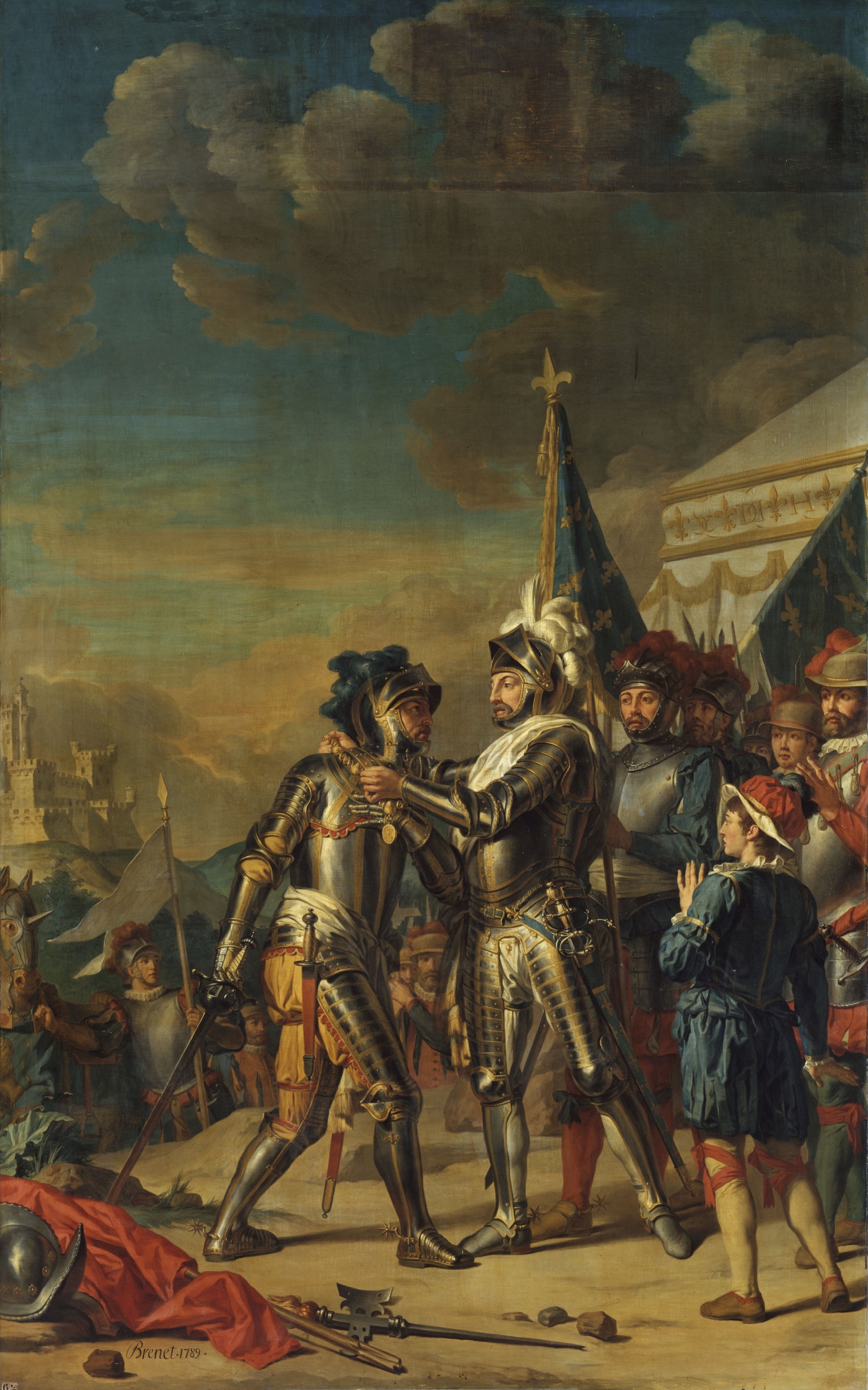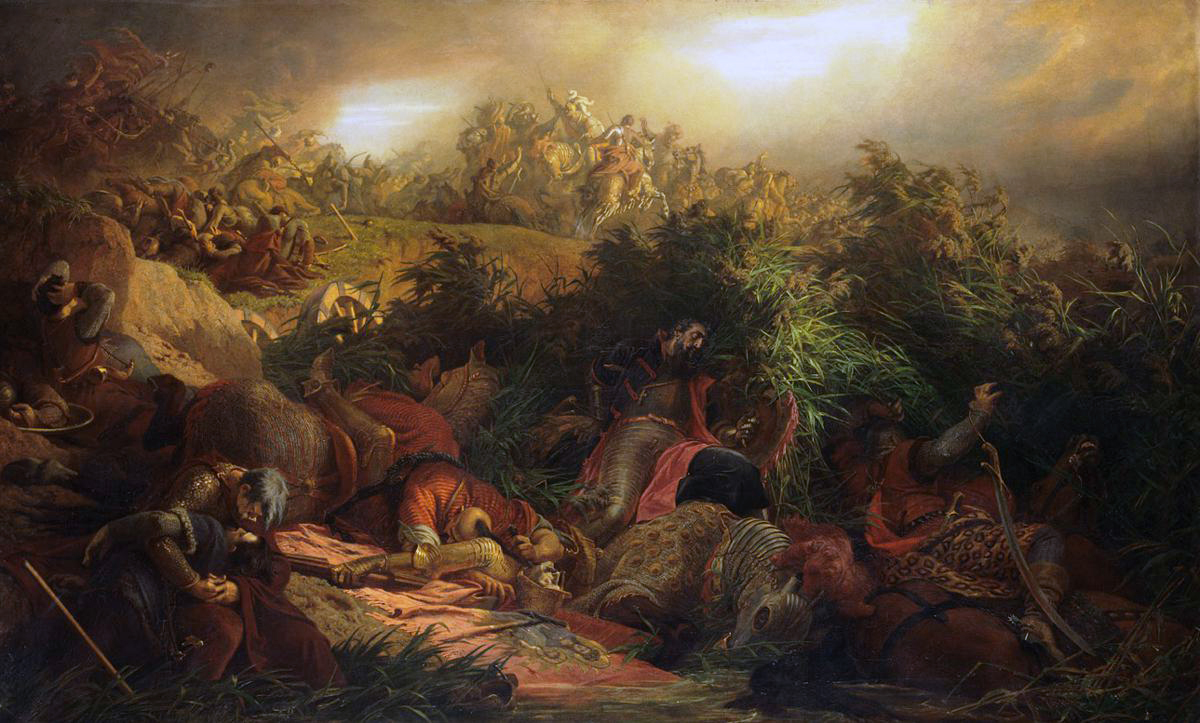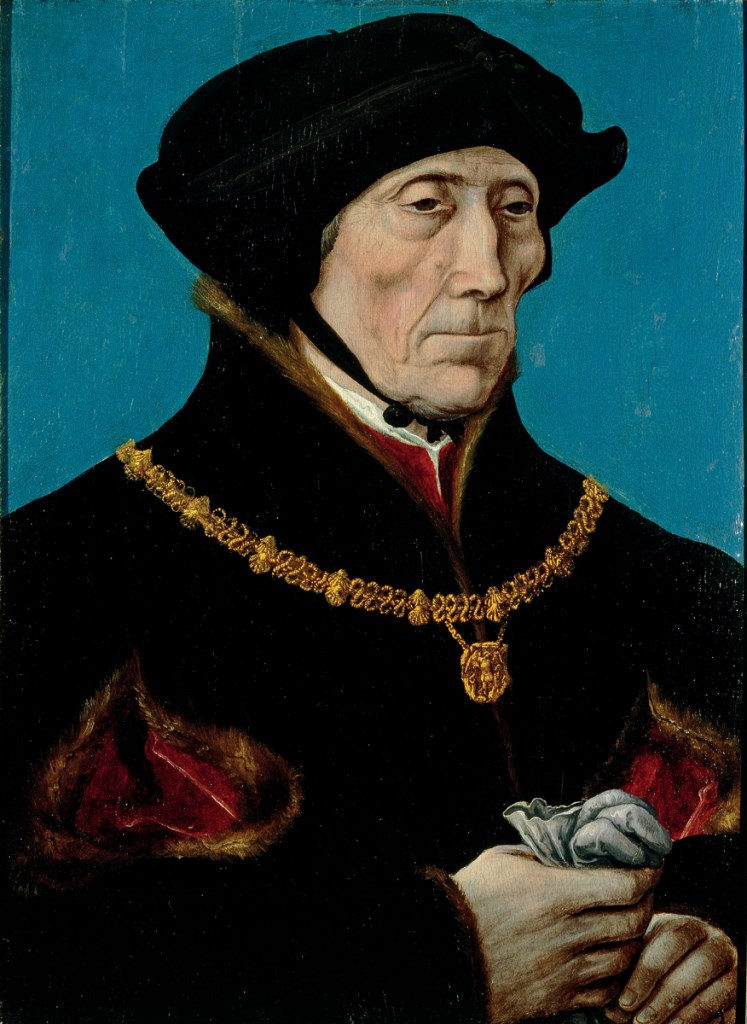|
Italian War Of 1551–1559
The Italian War of 1551–1559 began when Henry II of France declared war against Holy Roman Emperor Charles V with the intent of recapturing parts of Italy and ensuring French, rather than Habsburg, domination of European affairs. The war ended following the signing of the Treaty of Cateau-Cambrésis between the monarchs of Spain, England and France in 1559. Historians have emphasized the importance of gunpowder technology, new styles of fortification to resist cannon fire, and the increased professionalization of the soldiers. Timeline This is an overview of notable events including battles during the war. ;Prelude (1547–1551) * 10 September 1547: Pier Luigi Farnese, Duke of Parma, was assassinated, after which troops of Emperor Charles V occupied the Duchy of Parma. * ? 1547: Ottavio Farnese, Pier Luigi's son, attacked but failed to regain Parma from the Imperial garrison commanded by Ferrante Gonzaga. * 7 February 1550: The 1549–1550 papal conclave after Pope ... [...More Info...] [...Related Items...] OR: [Wikipedia] [Google] [Baidu] |
Italian Wars
The Italian Wars were a series of conflicts fought between 1494 and 1559, mostly in the Italian Peninsula, but later expanding into Flanders, the Rhineland and Mediterranean Sea. The primary belligerents were the House of Valois, Valois kings of Kingdom of France, France, on one side, and their opponents in the Holy Roman Empire and Habsburg Spain, Spain on the other. At different points, various Italian states participated in the war, some on both sides, with limited involvement from Kingdom of England, England, Switzerland, and the Ottoman Empire. The Italic League established in 1454 achieved a Balance of power (international relations), balance of power in Italy, but fell apart after the death of its chief architect, Lorenzo de' Medici, in 1492. Combined with the ambition of Ludovico Sforza, its collapse allowed Charles VIII of France to invade Kingdom of Naples, Naples in 1494, which drew in Spain and the Holy Roman Empire. Although Charles was forced to withdraw in 1495, o ... [...More Info...] [...Related Items...] OR: [Wikipedia] [Google] [Baidu] |
Duchy Of Mantua
The Duchy of Mantua (; ) was a duchy in Lombardy, northern Italy. Its first duke was Federico II Gonzaga, member of the House of Gonzaga that ruled Mantua since 1328. In 1531, the duchy also acquired the March of Montferrat, thanks to the marriage between Gonzaga and Margaret Paleologa, Marchioness of Montferrat. The duchy's historic power and influence under the Gonzaga family made it one of the main artistic, cultural, and especially musical hubs of Northern Italy and the country as a whole. Mantua also had one of the most splendid courts of Italy and Europe in the fifteenth, sixteenth, and early seventeenth centuries. In 1708, after the death of Ferdinando Carlo Gonzaga, the last heir of the Gonzaga family, the duchy was partitioned. The domains were divided between the House of Savoy, that obtained the remaining half of Montferrat, and the House of Habsburg, that obtained the city of Mantua itself. History Background After the fall of the Western Roman Empire, Man ... [...More Info...] [...Related Items...] OR: [Wikipedia] [Google] [Baidu] |
Charles V, Holy Roman Emperor
Charles V (24 February 1500 – 21 September 1558) was Holy Roman Emperor and Archduke of Austria from 1519 to 1556, King of Spain (as Charles I) from 1516 to 1556, and Lord of the Netherlands as titular Duke of Burgundy (as Charles II) from 1506 to 1555. He was heir to and then head of the rising House of Habsburg. His dominions in Europe included the Holy Roman Empire, extending from Germany to northern Italy with rule over the Austrian hereditary lands and Burgundian Low Countries, and Spain with its possessions of the southern Italian kingdoms of Naples, Sicily and Sardinia. In the Americas, he oversaw the continuation of Spanish colonization and a short-lived German colonization. The personal union of the European and American territories he ruled was the first collection of realms labelled " the empire on which the sun never sets". Charles was born in Flanders to Habsburg Archduke Philip the Handsome, son of Maximilian I, Holy Roman Emperor and Mary of Burg ... [...More Info...] [...Related Items...] OR: [Wikipedia] [Google] [Baidu] |
Pope Paul IV
Pope Paul IV (; ; 28 June 1476 – 18 August 1559), born Gian Pietro Carafa, was head of the Catholic Church and ruler of the Papal States from 23 May 1555 to his death, in August 1559. While serving as papal nuncio in Spain, he developed an anti-Spanish outlook that later coloured his papacy. In response to an invasion of part of the Papal States by Spain during his papacy, he called for a French military intervention. After a defeat of the French and with Spanish troops at the edge of Rome, the Papacy and Spain reached a compromise: French and Spanish forces left the Papal States and the Pope thereafter adopted a neutral stance between France and Spain. Carafa was appointed bishop of Chieti, but resigned in 1524 in order to found with Saint Cajetan the Congregation of Clerics Regular ( Theatines). Recalled to Rome, and made Archbishop of Naples, he worked to re-organise the Inquisitorial system in response to the emerging Protestant movement in Europe, any dialogue wi ... [...More Info...] [...Related Items...] OR: [Wikipedia] [Google] [Baidu] |
Dragut
Dragut (; 1485 – 23 June 1565) was an Ottoman corsair, naval commander, governor, and noble. Under his command, the Ottoman Empire's maritime power was extended across North Africa. Recognized for his military genius, and as being among "the most dangerous" of corsairs, Dragut has been referred to as "the greatest pirate warrior of all time", "undoubtedly the most able of all the Turkish leaders", and "the uncrowned king of the Mediterranean". He was nicknamed "the Drawn Sword of Islam". He was described by a French admiral as "a living chart of the Mediterranean, skillful enough on land to be compared to the finest generals of the time" and that "no one was more worthy than he to bear the name of king". Hayreddin Barbarossa, who was his mentor, stated that Dragut was ahead of him "both in fishing and bravery". In addition to serving as Admiral and Corsair in the Ottoman Empire's Navy under Suleiman the Magnificent, Dragut was also appointed Bey of Algiers and Djerba, Beyle ... [...More Info...] [...Related Items...] OR: [Wikipedia] [Google] [Baidu] |
Koca Sinan Pasha
Koca Sinan Pasha (, "Sinan the Great", ; c. 1506 – 3 April 1596) was an Albanian-born Ottoman Grand Vizier, military figure, and statesman. From 1580 until his death he served five times as Grand Vizier. Early life Sinan Pasha, also known as ''Koca Sinan'' (Sinan the Great), was born in Topojan in Luma territory and was of Albanian origin. Sinan Pasha was a descendant of Gjergj Arianiti. In a Ragusan document of 1571 listing members of the Ottoman Sultan's governing council, Sinan is described as coming from a Catholic family that converted to Islam. His father was named Ali Bey and Sinan Pasha had family ties with Catholic relatives such as the Giubizzas.Malcolm, Noel (2015). Agents of Empire: Knights, Corsairs, Jesuits and Spies in the Sixteenth-century Mediterranean World'. Oxford University Press. . pp.264–265. "Sinan came from a small village in north-eastern Albania. As the writer Lazaro Soranzo put it, very probably deriving his information from Bartolomeo's co ... [...More Info...] [...Related Items...] OR: [Wikipedia] [Google] [Baidu] |
Suleiman The Magnificent
Suleiman I (; , ; 6 November 14946 September 1566), commonly known as Suleiman the Magnificent in the Western world and as Suleiman the Lawgiver () in his own realm, was the List of sultans of the Ottoman Empire, Ottoman sultan between 1520 and his death in 1566. Under his administration, the Ottoman Empire ruled over at least 25 million people. After succeeding his father Selim I on 30 September 1520, Suleiman began his reign by launching military campaigns against the Christendom, Christian powers of Central and Eastern Europe and the Mediterranean; Siege of Belgrade (1521), Belgrade fell to him in 1521 and Siege of Rhodes (1522), Rhodes in 1522–1523, and at Battle of Mohács, Mohács in 1526, Suleiman broke the strength of the Kingdom of Hungary in the Middle Ages, Kingdom of Hungary. Presiding over the apex of the Ottoman Empire's economic, military, and political strength, Suleiman rose to become a prominent monarch of 16th-century Europe, as he personally led Arm ... [...More Info...] [...Related Items...] OR: [Wikipedia] [Google] [Baidu] |
Piero Strozzi
Piero (or Pietro) Strozzi ( 1510 – 21 June 1558) was an Italian military leader. He was a member of the rich Florentine family of the Strozzi. Biography left, Portrait of Piero Strozzi by Anonymous artist Born in Florence, Piero Strozzi was the son of Filippo Strozzi the Younger and Clarice de' Medici. Although in 1539 he married another Medici, Laudomia di Pierfrancesco, he was a fierce opponent of the main line of that family. He fought in the army led by his father and other Florentine exiles from France to oust the Medici from Florence, but, after their defeat at the Battle of Montemurlo, Piero fled to France at the court of Catherine de' Medici. He was in French service during the Italian War of 1542. Having raised an army of Italian mercenaries, he was confronted by the Imperial-Spanish forces at the Battle of Serravalle, where he was defeated. According to the cryptographers and historians who in 2022 have examined an encoded letter sent in 1547 by Charles V ... [...More Info...] [...Related Items...] OR: [Wikipedia] [Google] [Baidu] |
Paul De Thermes
Paul de La Barthe de Thermes or de Termes (1482–1562), also Paul de Terme or Maréchal de Thermes, was a French army Marshal ("Maréchal"). Reign of Henri II Rough Wooing In June 1549, de Thermes was sent to Scotland to help in the war against England now called the Rough Wooing. He was instructed to continue the fortification of border strongholds, and came with massive reinforcements, munitions and money. De Thermes began the construction of an artillery fort at Luffness near Aberlady to prevent English supplies reaching Haddington. The Scottish leader Regent Arran came to stay at Carberry Tower and Seton Palace to see the works commence. De Thermes was helped at the site by a Scottish pursuivant Alexander Ross. Gilbert Kennedy, 3rd Earl of Cassilis was lieutenant of the Scottish force there. There was a scare that English soldiers would over-run the building site on 23 June. Men were summoned from as far away as Perth and Strathearn. On 25 June the lairds of East and West ... [...More Info...] [...Related Items...] OR: [Wikipedia] [Google] [Baidu] |
Anne De Montmorency
Anne de Montmorency, duc de Montmorency ( – 12 November 1567) was a French noble, governor, royal favourite and Constable of France during the mid to late Italian Wars and early French Wars of Religion. He served under five French kings (Louis XII of France, Louis XII, François I of France, François I, Henri II of France, Henri II, François II of France, François II and Charles IX of France, Charles IX). He began his career in the latter Italian Wars of Louis XII, seeing service at Battle of Ravenna (1512), Ravenna. When François, his childhood friend, ascended to the throne in 1515 he advanced as governor of the Bastille and Novara, then in 1522 was made a Marshal of France. He fought at the French defeat at Battle of La Bicocca, La Bicocca in that year, and after assisting in rebuffing the invasion of Charles III, Duke of Bourbon, Constable Bourbon he was captured at the disastrous Battle of Pavia. Quickly freed he worked to free first the king and then the king's sons. ... [...More Info...] [...Related Items...] OR: [Wikipedia] [Google] [Baidu] |
Henry II Of France
Henry II (; 31 March 1519 – 10 July 1559) was List of French monarchs#House of Valois-Angoulême (1515–1589), King of France from 1547 until his death in 1559. The second son of Francis I of France, Francis I and Claude of France, Claude, Duchess of Brittany, he became Dauphin of France upon the death of his elder brother Francis III, Duke of Brittany, Francis in 1536. As a child, Henry and his elder brother spent over four years in captivity in Spain as hostages in exchange for their father. Henry pursued his father's policies in matters of art, war, and religion. He persevered in the Italian Wars against the House of Habsburg, Habsburgs and tried to suppress the Reformation, even as the Huguenots, Huguenot numbers were increasing drastically in France during his reign. Under the April 1559 Peace of Cateau-Cambrésis which ended the Italian Wars, France renounced its claims in Italy, but gained certain other territories, including the Pale of Calais and the Three Bishoprics ... [...More Info...] [...Related Items...] OR: [Wikipedia] [Google] [Baidu] |








